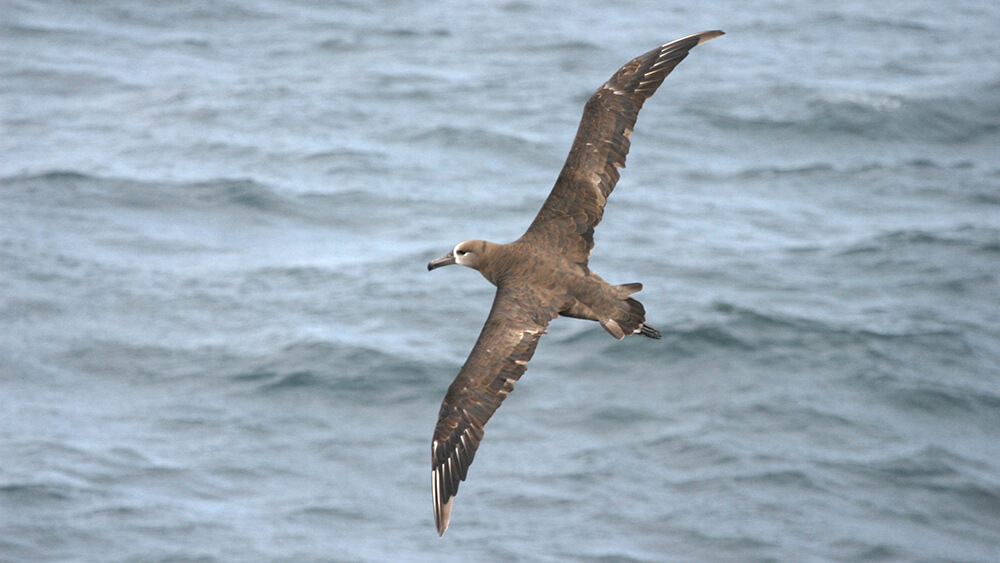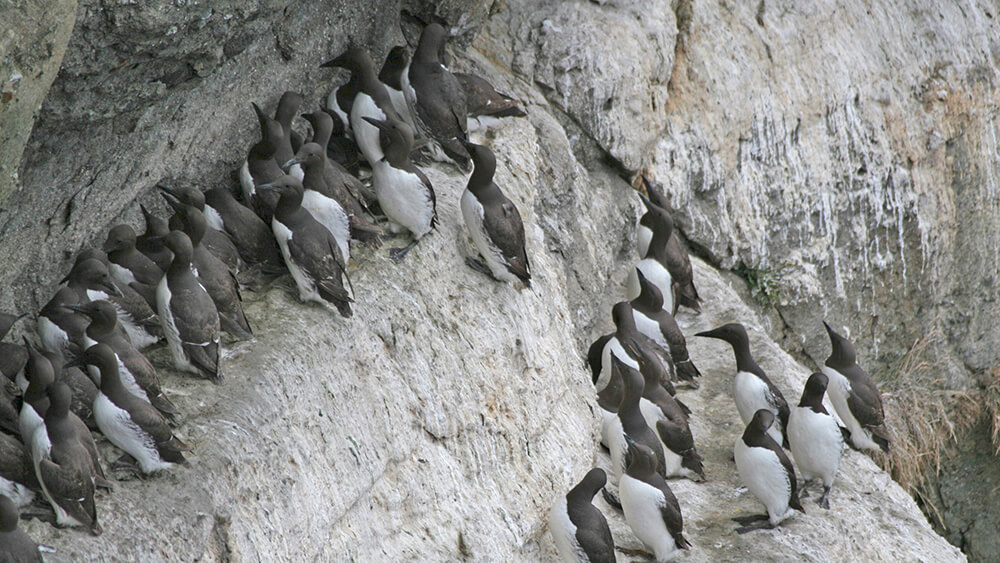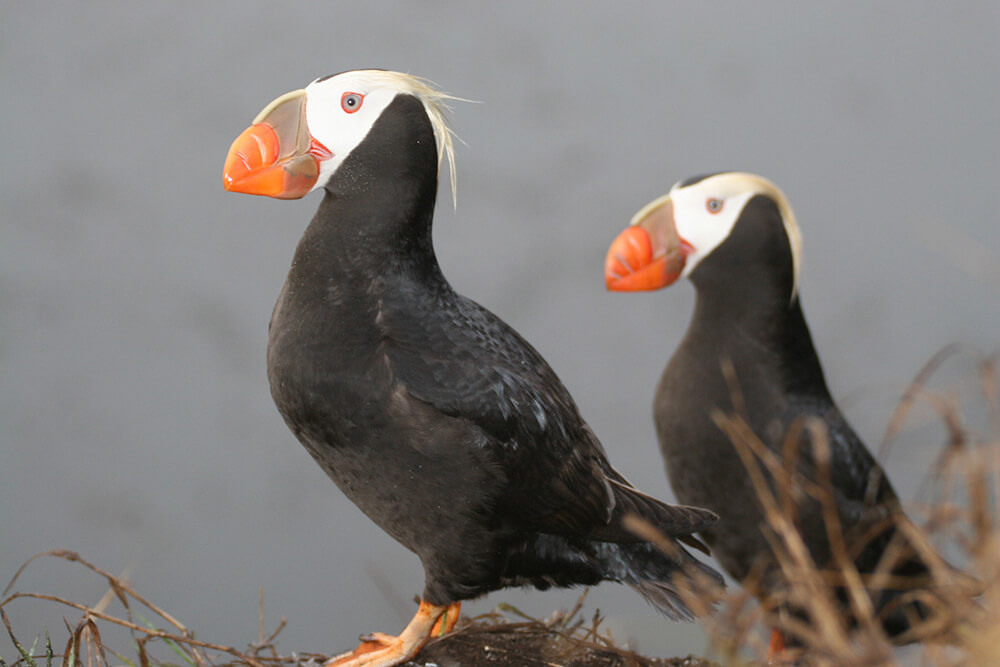Seabirds

Imagine a bird the size of a robin surviving on the open ocean. A bird like a fork-tailed storm-petrel, which weighs less than a stick of butter and is covered with seemingly fragile feathers, can weather winter storms, drink saltwater for refreshment and sleep comfortably on the rolling waves. Pelagic (ocean-living) birds live dramatic lives and seem to get along quite well in harsh aquatic environments. They would shun land completely except for one critical period of their lives—breeding.
Marine birds must return to the land in order to lay their eggs and during this time, they crowd onto the most remote, severe pieces of real estate they can find—the offshore islands and sea stacks. Some, like rhinoceros auklets, Cassin's auklets and storm-petrels burrow into any available soil and deposit an egg deep underground. Others, like common murres and cormorants, choose exposed cliff sites to either build a nest, or merely lay an egg on the rock and sit on it. But as soon as the young are developed enough to leave, all return to the relative safety and bounty of the open sea.

Olympic Coast National Marine Sanctuary is used by more than 100 different species of marine birds and shorebirds. Many of the birds that are here in significant numbers in the summer time are actually not local breeders. Sooty shearwaters, one of the most abundant birds found during the summer, have colonies off South America and Australia/New Zealand but many spend their "winter" in the eastern North Pacific.
Black-footed albatross, our most common albatross, nest in the Central and West Pacific (Hawaii and Japan) but many juveniles spend their formative years cruising relatively near our offshore waters. Northern fulmars breed much further north in places like the Pribilof Islands and the Alaskan Peninsula yet are a common sight in the sanctuary once you get offshore.

Tufted puffins, common murres and rhinoceros auklets are all in the family Alcidae and so, with other species, are referred to collectively as "alcids" and several species of alcids breed in the sanctuary. Each alcid species has a distinctive bill shape or color uniquely designed for fancy food hunting (usually fish, although some species eat only plankton) and for mate recognition.
All seabird species, whether they nest in our region or only migrate or winter here tell us something about the health of our marine ecosystem. They breed more successfully when food is abundant, they are sensitive to water contamination such as oil, they respond to human disturbance and sometimes suffer from intruders to their nest sites. By admiring, studying, and observing marine birds we can learn much about the ocean as a whole.

Not all coastal birds are truly pelagic. Waves of thousands of migrating shorebirds use the coastline like a road map. Their stop-off sites are few and far between yet critical to the success of their migration. Shorebirds and other migrating birds like waterfowl need to congregate in sheltered areas with abundant food to fuel their journeys. Loons, grebes, and ducks abandon their freshwater breeding grounds in the late summer and often spend their winters in the nearshore ocean environment. Bald eagle, osprey, and peregrine falcon nests dot the coastline, taking full advantage of the fish and bird abundance to feed their young. These birds, though not truly pelagic, are inextricably woven into the fabric of the ocean tapestry.


